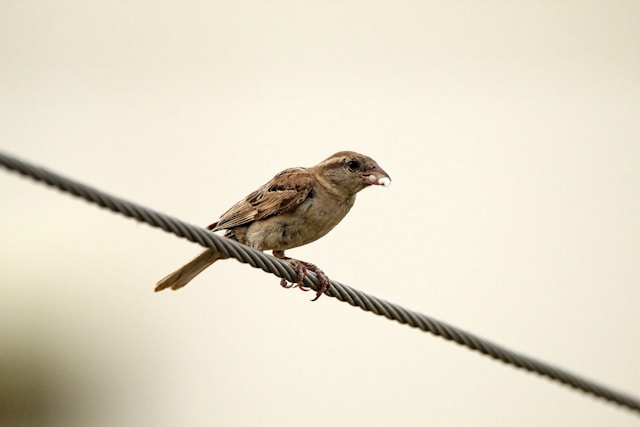The Subantarctic Islands, a remote and windswept group of islands scattered across the Southern Ocean, are a haven for birdlife. These islands, which include New Zealand’s Auckland, Campbell, and Snares Islands, are home to some of the world’s most unique and rare bird species. For ornithologists and bird enthusiasts alike, the Subantarctic Islands offer a glimpse into a pristine and largely untouched avian world. This article delves into the remarkable bird species of this region, their habitats, behaviors, and the ongoing efforts to conserve these precious creatures.
The Subantarctic Islands: A Birdwatcher’s Paradise
Located in the Southern Ocean, the Subantarctic Islands are characterized by their harsh weather conditions, including strong winds, heavy rainfall, and cool temperatures. Despite these challenging conditions, the islands support a rich diversity of bird species, many of which are endemic and have adapted to the unique environment. The isolation of these islands has allowed bird species to evolve independently, resulting in distinct and fascinating avian life.
Iconic Bird Species of the Subantarctic Islands
- Yellow-Eyed Penguin (Megadyptes antipodes):
- The yellow-eyed penguin, or hoiho, is one of the world’s rarest penguin species and is found primarily on the Auckland and Campbell Islands. Recognizable by its pale yellow eyes and yellow headband, this penguin is known for its reclusive nature and preference for nesting in dense vegetation away from human disturbance.
- Antipodean Albatross (Diomedea antipodensis):
- These majestic birds have a wingspan of up to 3 meters and are a sight to behold as they glide effortlessly over the ocean. The Antipodean albatross breeds on the Antipodes and Campbell Islands and is known for its extensive migrations, often covering vast distances across the Pacific Ocean.
- Campbell Island Teal (Anas nesiotis):
- Once thought to be extinct, the Campbell Island teal is a small, flightless duck that was rediscovered in the 1970s. Conservation efforts, including predator eradication and captive breeding programs, have helped to re-establish this species on Campbell Island.
- Snares Crested Penguin (Eudyptes robustus):
- This penguin species is endemic to the Snares Islands and is easily identifiable by the distinctive yellow crest feathers on its head. The Snares crested penguin nests in dense colonies and is known for its loud, braying calls.
- Southern Royal Albatross (Diomedea epomophora):
- Another of the great albatross species, the southern royal albatross breeds primarily on Campbell Island. With their impressive wingspan and elegant flight, these albatrosses are a highlight for any birdwatcher visiting the Subantarctic region.
- Auckland Island Shag (Leucocarbo colensoi):
- Endemic to the Auckland Islands, this striking bird is characterized by its black and white plumage and bright pink feet. The Auckland Island shag nests on cliffs and feeds primarily on fish and marine invertebrates.
Habitats and Behaviors
The Subantarctic Islands provide a range of habitats that support diverse bird species. Coastal cliffs and rocky shores are favored nesting sites for many seabirds, such as albatrosses and shags. The tussock grasslands and dense vegetation inland offer shelter for penguins and other ground-nesting birds.
Bird behaviors in this region are shaped by the need to adapt to the challenging environment. Many seabirds, such as albatrosses and petrels, are highly migratory, traveling thousands of kilometers across the ocean to forage for food. Penguins, on the other hand, are more sedentary, returning to the same nesting sites year after year.
Conservation Efforts
The unique birdlife of the Subantarctic Islands faces numerous threats, including climate change, introduced predators, and human activities. Conservation efforts are crucial to protect these species and their habitats.
- Predator Eradication Programs:
- Many of the Subantarctic Islands have been impacted by introduced species such as rats and cats, which prey on native birds and their eggs. Predator eradication programs have been successfully implemented on several islands, leading to significant recoveries of bird populations.
- Habitat Restoration:
- Efforts to restore native vegetation and habitats are ongoing. This includes replanting native species and removing invasive plants that disrupt the natural ecosystem.
- Research and Monitoring:
- Continuous research and monitoring are essential to understanding the population dynamics and health of bird species in the Subantarctic Islands. This data helps inform conservation strategies and actions.
- Marine Protected Areas:
- Establishing marine protected areas around the islands helps safeguard the feeding grounds and migration routes of seabirds, reducing the impact of fishing and other marine activities.
Visiting the Subantarctic Islands
For birdwatchers and nature enthusiasts, visiting the Subantarctic Islands is a once-in-a-lifetime experience. Several tour operators offer expeditions to these remote islands, providing opportunities to observe and photograph the unique birdlife up close. It is essential to choose eco-friendly tours that prioritize conservation and minimize human impact on the delicate ecosystems.
Conclusion
The Subantarctic Islands are a treasure trove of avian diversity, offering a glimpse into a world where nature remains largely untouched by human influence. The unique birds of this region, from the majestic albatrosses to the elusive Campbell Island teal, highlight the incredible adaptability and resilience of wildlife in extreme environments. Through continued conservation efforts and responsible ecotourism, we can ensure that these remarkable bird species thrive for generations to come. So, pack your binoculars and prepare for an unforgettable adventure into the wild, wind-swept world of the Subantarctic Islands.
